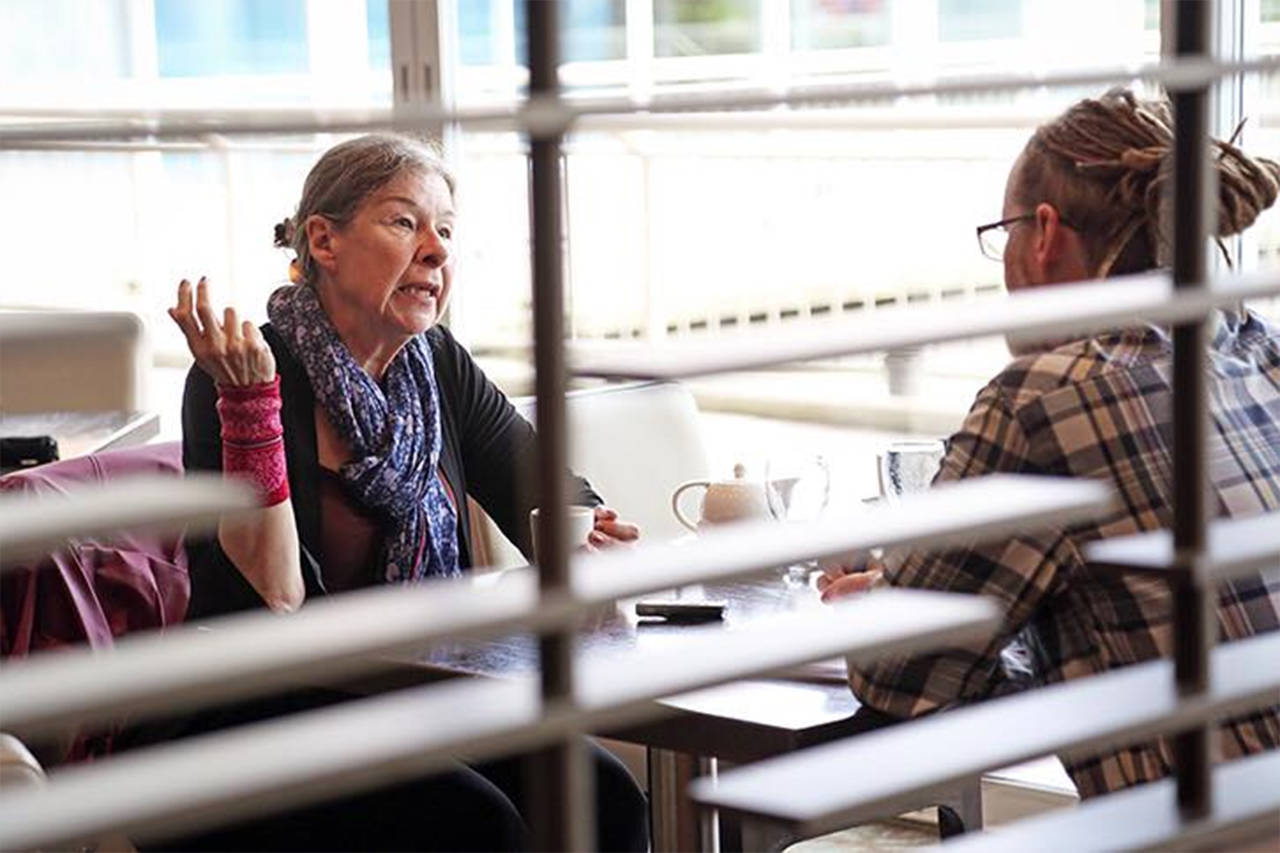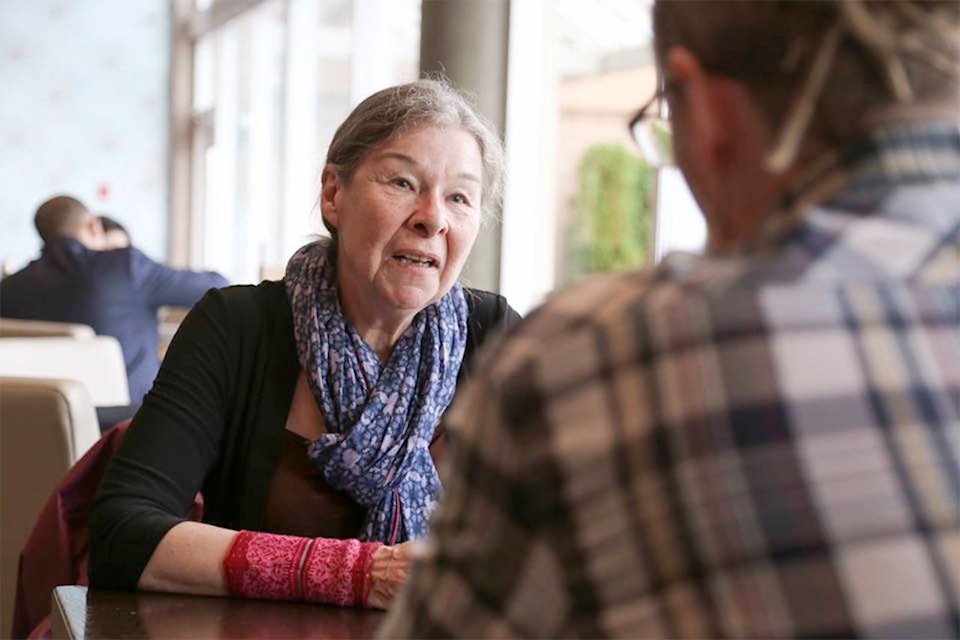This story originally appeared in the Nov. 17, 2016 edition of the Chilliwack Times
Sometimes it’s hard to see the forest for the trees as citizens read news stories about property crime and homelessness, rising rental costs and dropping vacancy rates, skyrocketing home prices and unethical landlord behaviour.
But if it isn’t always obvious, these narratives are all connected. Call it the real estate trickle down: a direct drip, drip, drip from million-dollar bungalows to tent cities.
That’s how Judy Graves sees the homeless crisis in the Lower Mainland and across Canada.
In a way, for Graves, the problem is simple: “Homelessness is about the availability of housing.”
And this woman should know. For 33 years she led the way as a tireless champion for the homeless, working as Vancouver’s one and only full-time advocate for those living on the streets.
Graves is coming to Chilliwack on Nov. 24 for a public forum at the University of the Fraser Valley (UFV) entitled “The Costs of Homelessness.” Graves sat down with the Times recently to talk about life on the streets, the root causes, the myths, and who needs to take responsibility.
On the inevitable road
For Graves, the causes of homelessness are universal and the route cities travel along towards crisis are the same.
“I can see Chilliwack following a pattern, the same pattern as everywhere,” she says. “Increasing numbers slowly and then a sudden vast increase. It hasn’t happened here, but it will.”
(When told the number of homeless had jumped sharply in recent months, from an estimated 100 or so to as high an estimate as 400, Graves suggested it “may have begun.”) The reason is simple: increases in the cost of living as, for example, a rooming house is suddenly worth a staggering amount of money so is torn down and gentrified, and there are that many fewer beds for people on the edge of homelessness.
“It happened in Vancouver, Surrey, Richmond, Toronto, Calgary, Edmonton, New York, San Franciso.”
But those are big cities.
“Chilliwack is a city.”
She pointed, as an example, to the Courtney-Comox area on Vancouver Island that at one time had little economic development, about a 30 per cent vacancy rate and zero homeless. Then the municipality revamped the military airport to accept commercial tourist jets, people arrived and loved it.
Five years later there are dozens of homeless people and little affordable housing.
“With wonderful economic development comes this problem.”
On Chilliwack and who to blame
“It is not that you did anything wrong,” Graves said of the city’s response and planning, and specifically the recent tent city that popped up downtown. “This is actually a particularly good community…. [City hall has] managed the incoming problem to the best of their ability.”
In fact, this has been going on for 20 or 30 years, Toronto in the 1980s, Vancouver in the 1990s.
Mayor Sharon Gaetz has been criticized on social media for blaming recent spikes in crime on “growing pains.”
Graves said that is exactly correct.
“She is right, which does not mean we should accept it.”
Chilliwack has been “extremely good” with its management of what Graves says is a lack of planning on the part of the provincial and federal governments.
She said in the early 1990s, the federal government cancelled the programs that created housing stock for low income Canadians. Most provinces did, too, and while B.C. was one of only two that didn’t, without the feds on board they couldn’t keep it up.
Homelessness is not a municipal responsibility, but it lands at the feet of civic politicians and higher levels of government have not responded quickly enough.
On the ‘send-‘em-back’ philosophy
As discussion of homelessness emerges, there are the predictable voices exclaiming folks should be sent “back” to where they came from, or to the big city. Or even to the Arctic.
But Graves points out that Canadians move around, homeless and otherwise.
“There are Chilliwack homeless in Mission and Abbotsford and Surrey,” she said. “This isn’t a matter of send them back where they came from. They are mostly local.”
Graves tackles the myth that Chilliwack’s homeless arrived here from elsewhere. It may be true to some extent but no more so, less so likely, than for the rest of us who are employed and housed.
As for the myth that the Lower Mainland is a homeless utopia because of the warmer winters, not so, she says. The rainy weather means people suffer more on the streets with skin infections and bronchial conditions because for eight months of the year, they just can’t get dry.
She visited with people living on the streets in Ottawa in -19C temperatures and while it wasn’t fun, she talked to men who had figured out how to bundle up then curl up with corrugated cardboard to stay warm and dry.
“It’s a myth they are moving this way,” she says. “This is not about weather.”
On mental health and addictions
Often the issue of homelessness is seen as a symptom, rather than the problem itself; a result of untreated mental health issues or drug addiction.
But Graves says “no,” the lack of a roof over a person’s head is the primary problem.
“Most people who are drug-addicted and alcoholic pay their mortgages and go to work,” she says. When asked if extremely low-barrier housing could just lead to flop houses, she says we shouldn’t worry about that. It’s none of our business.
“Nobody knows what the working people do with other working people. It’s because they have walls and drapes over their windows.”
As for the need for detox and mental health facilities?
On the former: “Against the need there is almost none.”
And the latter: Extreme scarcity. Graves says the most prevalent conditions on the street are severe depression and severe anxiety, both that can be treated effectively but only if people are housed.
The problem is not the mental health or the addictions.
“The actual problem is there is a percentage of our population that can’t afford housing.”
And the extreme trauma and stress of living outside, focused on day-to-day survival coupled with depression and anxiety makes it impossible for people to have a complex thought, let alone “get a job” as some like to yell out car windows to the most vulnerable.
“It makes it impossible to hope or dream,” Graves says.
The downward spiral means that when asked, many say they don’t want to go inside.
“They don’t know what they want anymore,” she says. “They can’t imagine anything being good or even better.”
On the real problem
Quite often when Judy Graves arrives in a new city, she puts on her rattiest clothes to head out to talk to the people who live on the streets.
In Ottawa, she bought pizza for some guys as long as they answered questions. In no time she found out the best soup line and the worst; the best places to sleep; the drugs on the street and the history of drugs on the street. “I told the police chief and he said ‘We didn’t know any of that.’” She is one of the few people simultaneously engaging with policy makers with her feet firmly on the street, in and among those living day after day in the elements, pathologically paranoid, addicted to drugs.
But in the end, it’s all about real estate and the affordability crisis spreading across Canada like a virus.
“It’s not a Chilliwack problem, it’s a Canadian problem, and I want you to write this down: After years of taking a guy off the street, tucking him into a bed, taking another guy off the street, tucking him into a bed, is it effective? It only becomes a problem when I run out of places to tuck him in to.”
@PeeJayAitch
paul.henderson@theprogress.com
Like us on Facebook and follow us on Twitter.

